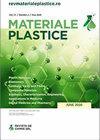数字技术在假肢修复中的应用研究
IF 0.6
4区 材料科学
Q4 MATERIALS SCIENCE, MULTIDISCIPLINARY
引用次数: 0
摘要
数字技术的使用已经成为实现假牙修复的一个有用的过程,也是一个优选的过程,因为通过数字技术,可以在美观、执行精度和耐用性方面获得高质量的假牙。CAD/CAM技术正在改变牙科的方方面面,使牙科医生、患者和牙科技术人员的牙科修复过程更加容易和高效。可用于制造使用Exocad软件设计的牙齿修复体的材料取决于修复体的类型(牙冠、牙桥、贴面等)和制造方法(使用3轴、4轴或5轴CAM设备进行铣削);可用的材料包括:PMMA(聚甲基丙烯酸甲酯)和氧化锆。在本研究中,我们使用数字技术进行了6次固定修复,其中5次单牙修复(5个牙冠)和1次多牙修复(4元牙桥);在6个修复体中,3个修复体将通过粘接在基牙上进行固定,3个恢复体将通过拧入植入物进行固定。数字技术允许使用更高质量的材料,从而产生更具抵抗力和更美观的假体修复体;有助于减少错误的发生;从而获得更好的边缘适应和对患者牙齿的解剖结构的完美适应。本文章由计算机程序翻译,如有差异,请以英文原文为准。
Study on the Use of Digital Technology in the Realization of Prosthetic Restorations
The use of digital technology has become a useful and also a preferred process in the realization of dental prosthetic restorations, because through it, superior quality dental prostheses are obtained in terms of aesthetics, accuracy of execution and durability. CAD/CAM technology is changing all aspects of dentistry, making dental restoration processes much easier and more efficient for dentists, patients and dental technicians. The materials that can be used to manufacture dental restorations designed using Exocad software depend on the type of restoration (crowns, bridges, veneers, etc.) and the manufacturing method (milling with a 3-, 4-, or 5-axis CAM device); available materials include: PMMA (polymethyl methacrylate) and zirconia. Using digital technology, in this study we performed 6 fixed prosthetic restorations, of which 5 unidental restorations (5 dental crowns) and 1 pluridental restoration (a 4-element dental bridge); of the 6 prosthetic restorations, 3 restorations will be fixed by cementing on dental abutments, and 3 restorations will be fixed by screwing on implants. Digital technology allows the use of higher quality materials, resulting in more resistant and more aesthetic prosthetic restorations; helps reduce the occurrence of errors; obtaining a better marginal adaptation and a perfect adaptation to the anatomical structures of the patient s teeth.
求助全文
通过发布文献求助,成功后即可免费获取论文全文。
去求助
来源期刊

Materiale Plastice
MATERIALS SCIENCE, MULTIDISCIPLINARY-
CiteScore
1.40
自引率
25.00%
发文量
99
审稿时长
6-12 weeks
期刊介绍:
Materiale Plastice, abbreviated as Mater. Plast., publishes original scientific papers or guest reviews on topics of great interest.
The Journal does not publish memos, technical reports or non-original papers (that are a compiling of literature data) or papers that have been already published in other national or foreign Journal.
 求助内容:
求助内容: 应助结果提醒方式:
应助结果提醒方式:


